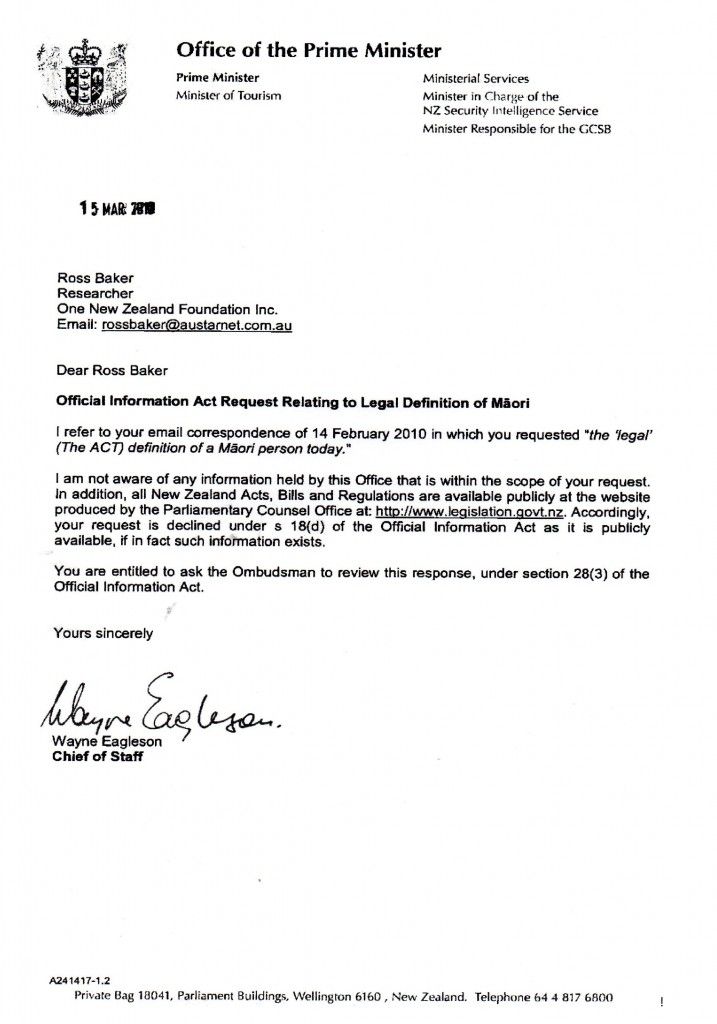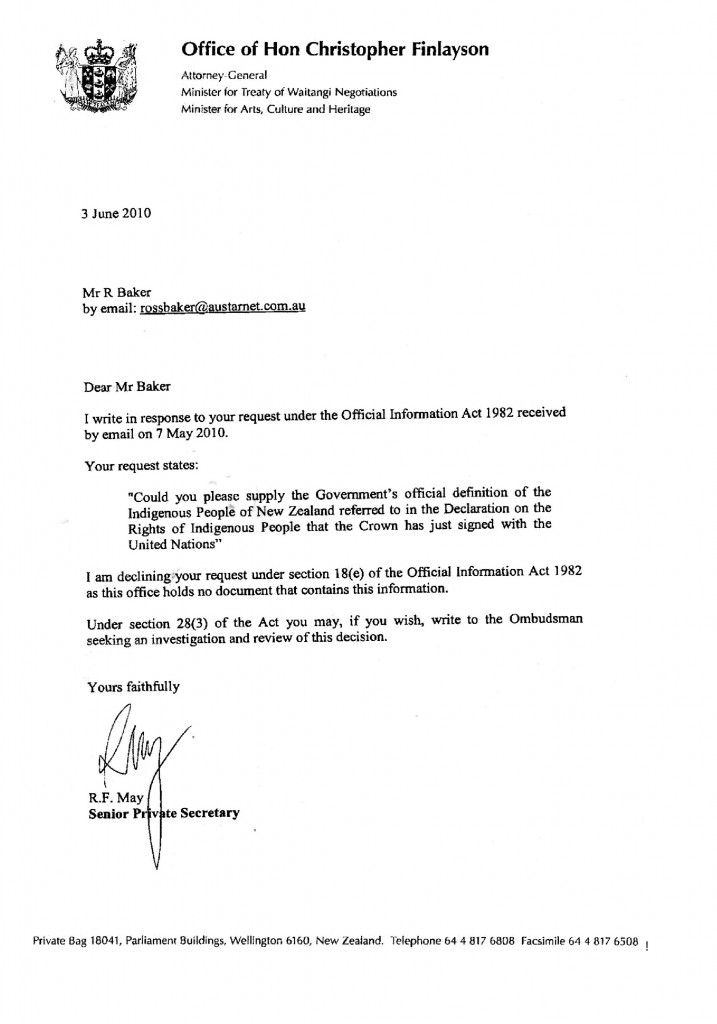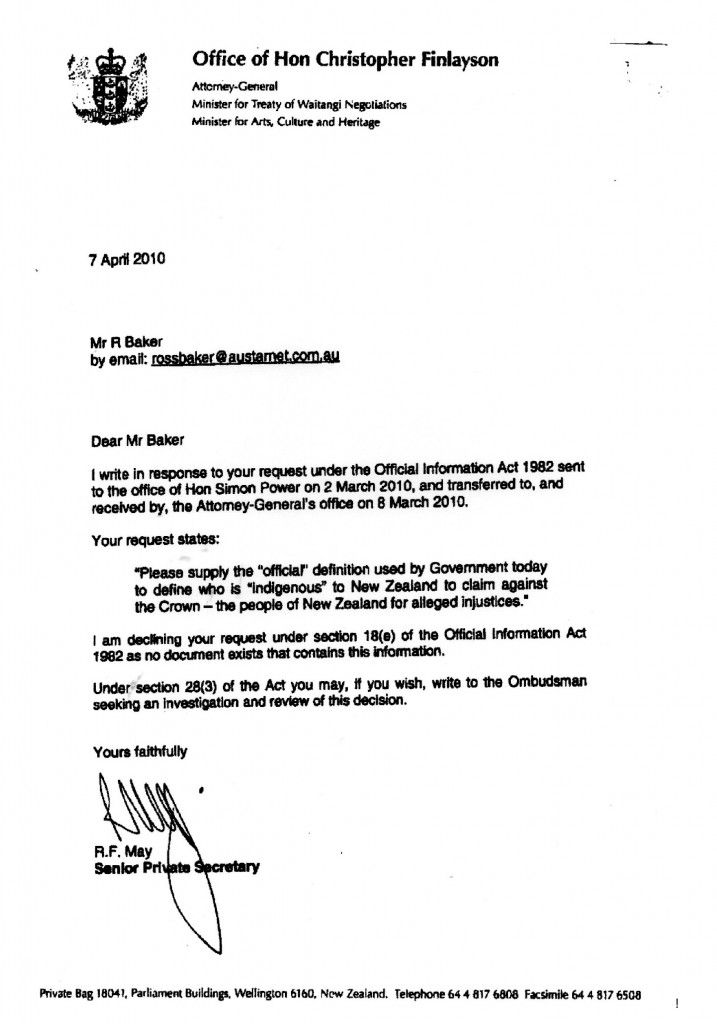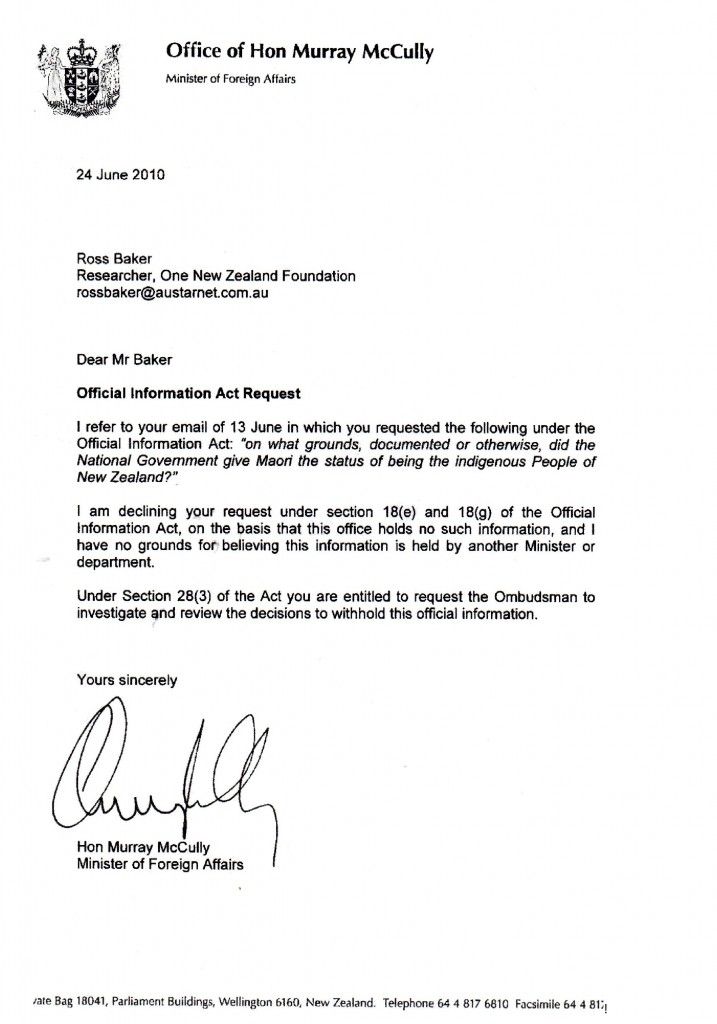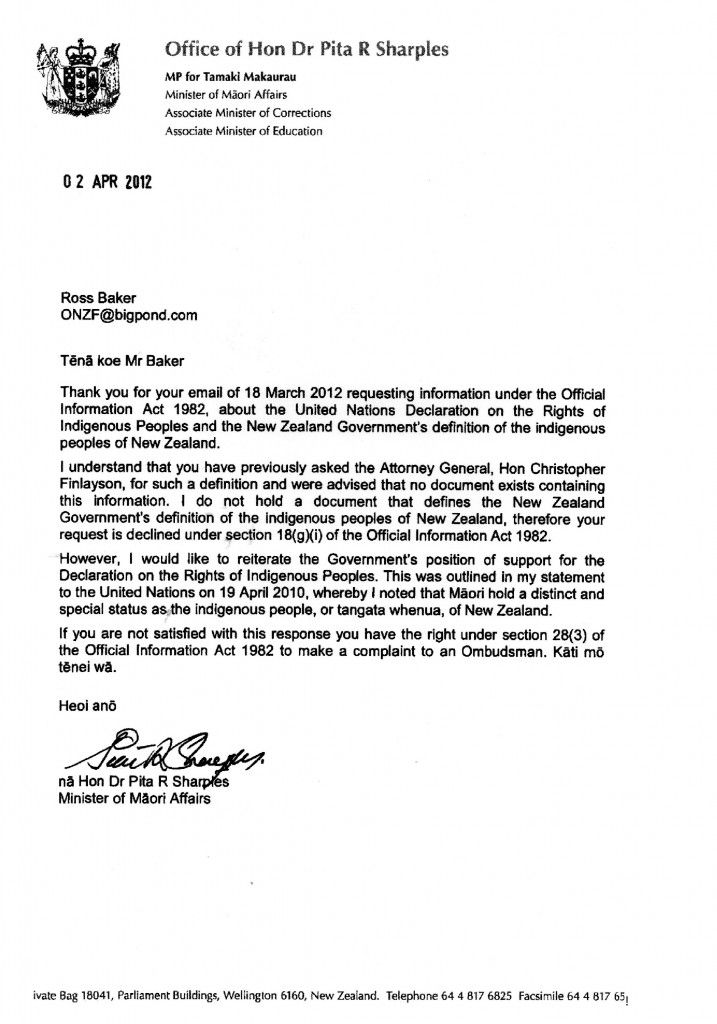Customary Rights to Indigenous People But Maori are not Indigenous to New Zealand
The Ministry of Justice book entitled, “Recognising Customary Rights” is based on Maori being the Indigenous people or tangata whenua of New Zealand but there is no explanation or definition of these people in the Glossary.
The Glossary on page 24 states, “Customary marine title (CMT). Comes from a common law concept that recognises property rights of indigenous people that have continued since or before the acquisition of Crown sovereignty to the present day. It is inalienable – the land cannot be sold – and cannot be converted to freehold titled Recognises the relationship that exists, and will continue to exist, between iwi, hapu and whanu and common marine and coastal areas”.
After many years of research by the One New Zealand Foundation Inc and many others, we can find no information to support Maori are the indigenous people or tangata whenua of New Zealand. In fact all the information and evidence we have on file confirms Maori were not the indigenous people of New Zealand.
The evidence we have on file that Maori are not the indigenous people of New Zealand or tangata whenua.
- When Rev Henry Williams and his son Edward translated Lt. Governor Hobson’s final English draft of the Treaty into the Maori language, they use the term, “tangata Maori” to define the people that sign the Tiriti o Waitangi. Both Rev Henry Williams and his son must have known after living in New Zealand for 23 years, that Maori were not the indigenous or tangata whenua. All500 plus chiefs that signed the Tiriti o Waitangi as tangata Maori as they knew they were not tangata whenua! This is only a modern concept by part-Maori to claim Customary Rights!
- In the,”1986 New Zealand Year Book” on page 18, Professor Ranginui Walker, past head of Maori Studies at Auckland University had this to say about the canoe people that arrived in the 14 century, “The traditions are quite clear on one point, whenever crew disembarked there were already tangata whenua (prior inhabitants). The canoe ancestors of the 14-century merged with these tangata whenua tribes. From this time on the traditions abound with accounts of tribal wars over land and its resources. Warfare was the means by which tribal boundaries were defined and political relations between tribes established. Out of this period emerged 42 tribal groups whose territories became fixed after the signing of the Treaty of Waitangi and the establishment of Pax Britannica”. (Pax Britanica – British Peace). While Professor Walker make a clear distinction between the canoe people of the 14 century and the tanagat whenua, he makes no mention of who the tangata whenua were for the simple reason, we are not allowed to know!
- After the Minister of Maori Affairs, the Hon Pita Sharples had signed the Declaration on the Rights of Indigenous People on behalf of the people of New Zealand, the One New Zealand Foundation Inc. wrote under the Official Information Act to the following Ministers asking them for the official document defining, “Who are the indigenous people of New Zealand.
- I have attached the replies from the Prime Minister, Hon John Key; the Attorney General, Hon Christopher Finlayson; the Minister of Maori Affairs, Hon Pita Sharples; the Minister of Foreign Affairs, the Hon Murray McCully and a letter from the Attorney General in response to our OIA request to the Minister of Justice, Hon Simon Power.
- When the Hon Pita Sharples signed the Declaration on the Rights of Indigenous People in New York, he stated to the United Nations, “Maori hold a distinct and special status as the indigenous people, or tangata whenua, of New Zealand”, but when asked, he could not supply a definition of who these people where.
- We are extremely concerned that the Ministry of Justice has taken for granted that Maori are the Indigenous People of New Zealand or the tangata whenua when all the evidence we have on file, including the Tiriti o Waitangi and the attached Minister’s letters say the Government does not have a definition of the Indigenous People of New Zealand or tangata whenua.
If Maori were the Indigenous People of New Zealand, which there is no evidence to prove they were, how can they honestly claim to be today when they have continued to intermarry with other race of their own free will until most now only have a minute trace of Maori ancestry and no longer live by their Maori culture?
Before the Customary Rights debate proceeds, the people of New Zealand must have an “official” definition of the Indigenous People of New Zealand, supported up with forensic evidence.
Compiled by Ross Baker, One New Zealand Foundation Inc. www.onenzfoundation.co.nz (12/8/2015)


